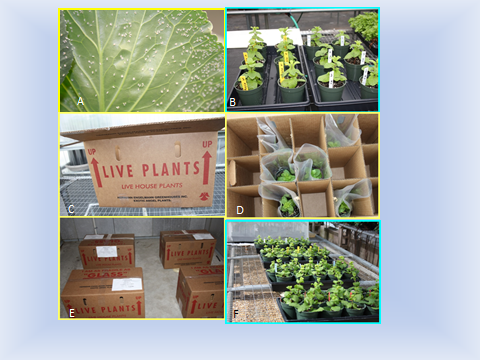
Research Summary Abstract
The project entitled “Developing sustainable methods for controlling invasive pests on ornamental plant cuttings” had 6 objectives with two primary goals of studying the newly introduced Duponchelia fovealis and to examine methodologies to reduce interstate and international shipment of invasive species using model crop-pest systems. An unstated objective was to disseminate the newly gathered information to stakeholders via technical literature and presentations to growers. Our research team determined the minimal and maximum temperature thresholds for D. fovealis development with the optimal temperature being 32.2ºC. The current D. fovealis population within San Diego county was surveyed over time demonstrating multiple generations per year. In examining hot water immersion treatments as a potential means of disinfestation, rooted chrysanthemum cuttings exhibited higher heat tolerance than unrooted cuttings and subsequent growing conditions can impact growth and market readiness. Poinsettia cuttings were not able to tolerate the same temperatures as chrysanthemums. For pre-shipment efficacy on cuttings, aphid, mite and thrips populations were reduced by dips into natural products but not consistently to the level required to eliminate interstate or international shipping of these pests. For actual shipping, citrus mealybug populations were also reduced with dip treatments generally providing better control than spray treatments. BotaniGard and Safari reduced mealybug populations to virtually zero by approximately 2 weeks after application. With silverleaf whitefly, none of the natural products sufficiently reduced populations after shipping to warrant their use as regulatory pre-shipment treatments.
